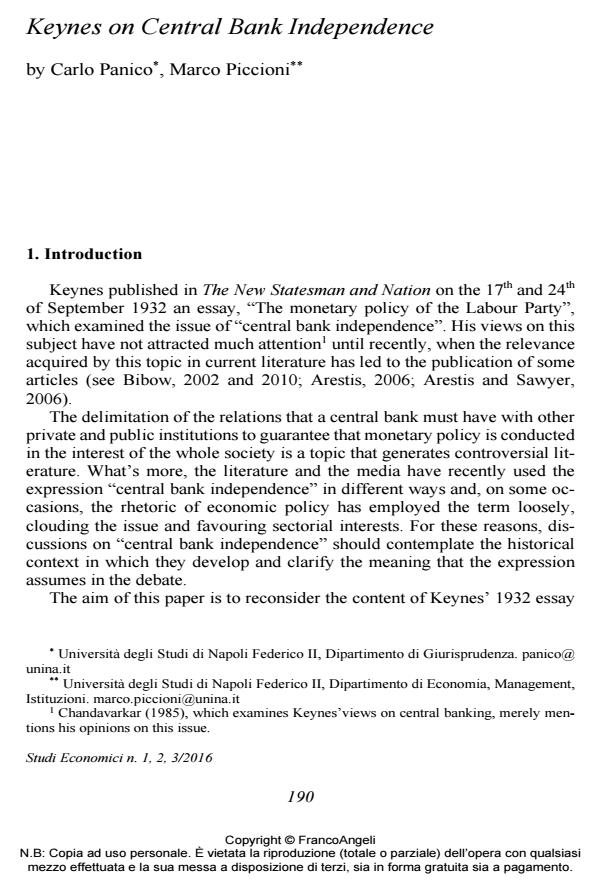Keynes on Central Bank Independence
Titolo Rivista STUDI ECONOMICI
Autori/Curatori Carlo Panico, Marco Piccioni
Anno di pubblicazione 2017 Fascicolo 2016/118-119-120
Lingua Inglese Numero pagine 27 P. 190-216 Dimensione file 263 KB
DOI 10.3280/STE2016-118012
Il DOI è il codice a barre della proprietà intellettuale: per saperne di più
clicca qui
Qui sotto puoi vedere in anteprima la prima pagina di questo articolo.
Se questo articolo ti interessa, lo puoi acquistare (e scaricare in formato pdf) seguendo le facili indicazioni per acquistare il download credit. Acquista Download Credits per scaricare questo Articolo in formato PDF

FrancoAngeli è membro della Publishers International Linking Association, Inc (PILA)associazione indipendente e non profit per facilitare (attraverso i servizi tecnologici implementati da CrossRef.org) l’accesso degli studiosi ai contenuti digitali nelle pubblicazioni professionali e scientifiche
The article examines Keynes’views on central bank independence (CBI), focussing on an essay he published in 1932. After distinguishing the several forms of CBI, we argue that Keynes only favoured some of them, avoiding impairing the role that political institutions must play in deciding the objectives of monetary policy. We assess Keynes’views against the background of the crucial transformations that the Bank of England underwent after WWI and of the Labour Party debates on the integration between CBI and the functioning of democracy. Keynes maintained that CBI must protect monetary policy decisions from the pressures coming from both private and political groups; and added that the separation of competence among elected and non-elected bodies must be supplemented by large communication with the society and by cooperation and coordination among public institutions. Finally, we highlight that Keynes’proposals are relevant for present debates.
Parole chiave:Central bank independence, Monetary policy, Institutional organization of policy
Jel codes:B22, E12, E42, E58, E61
- Independencia del Banco Central: la visión de Keynes, Prebisch, Friedman y Rogoff Germán Vargas Magaña, in Ciencia Económica /2021 pp.32
DOI: 10.22201/fe.24484962e.2021.10.16.3
Carlo Panico, Marco Piccioni, Keynes on Central Bank Independence in "STUDI ECONOMICI " 118-119-120/2016, pp 190-216, DOI: 10.3280/STE2016-118012